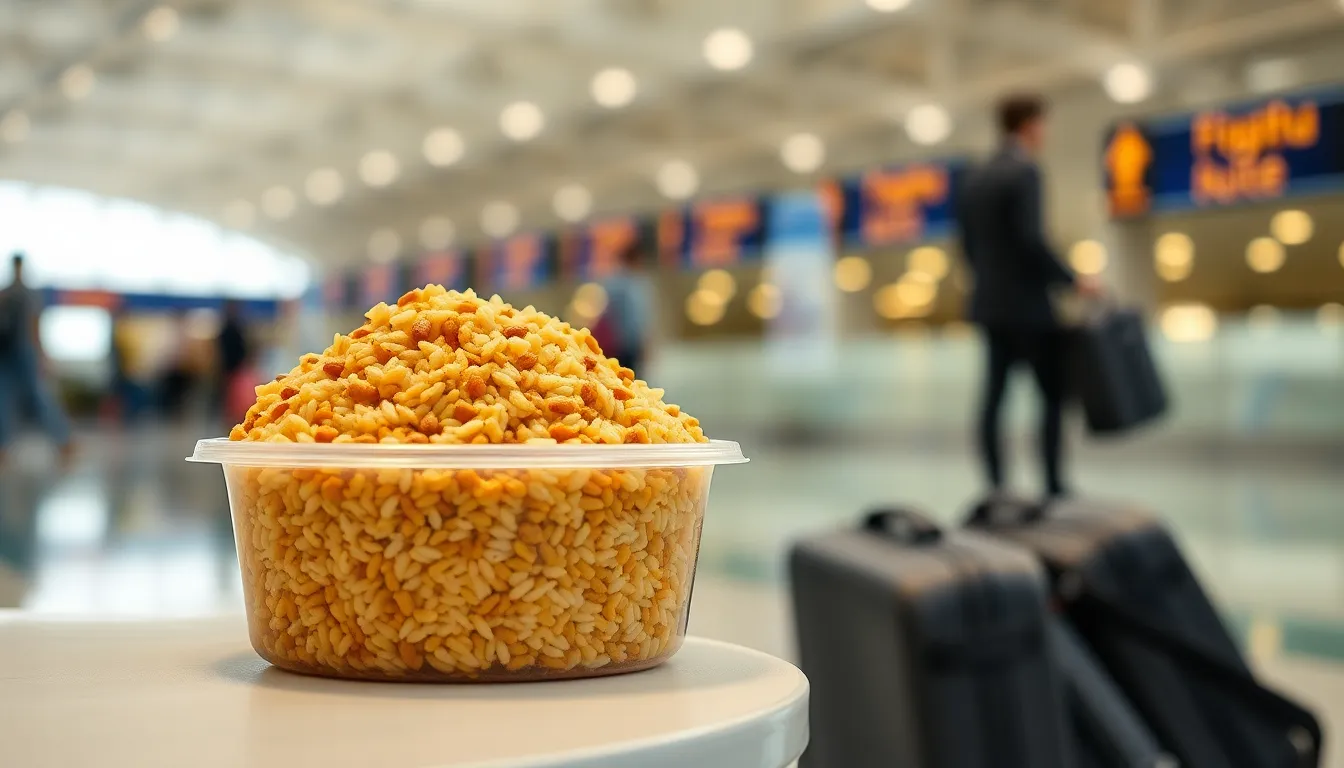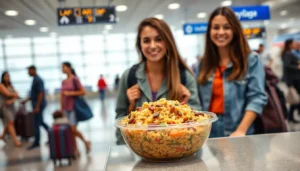Traveling can be a delightful adventure, but figuring out what to pack can feel like a puzzle. If you’re wondering whether you can bring food kayudapu on a plane, you’re not alone. Many travelers face the dilemma of satisfying their cravings while navigating the rules of air travel.
Table of Contents
ToggleUnderstanding Kayudapu
Travelers often seek information on the type of food allowed on planes, making kayudapu a relevant topic. This traditional food raises questions about its suitability for air travel.
What Is Kayudapu?
Kayudapu refers to a savory dish made primarily with rice and lentils. Common in certain regional cuisines, it features various spices and vegetables. Its unique preparation method involves steaming, contributing to its distinct texture and flavor. When prepared traditionally, kayudapu may also include meat or fish, enhancing its taste profile. Many appreciate it for its versatility, as it can serve as a meal or a snack.
Nutritional Benefits of Kayudapu
Significant nutritional value characterizes kayudapu. Rich in carbohydrates, it provides energy essential for travelers. Protein content from lentils supports muscle health and satiety, making it a wholesome option. Vitamins and minerals from vegetables in the dish contribute to overall well-being. Its fiber promotes digestive health, helping regulate blood sugar levels. Many find kayudapu a balanced choice, combining taste and nourishment seamlessly.
Airline Regulations on Food

Airline regulations on food can vary. Passengers often question what foods are permissible during flights.
General Rules for Bringing Food on a Plane
Passengers can typically bring solid foods aboard aircraft. Foods like fruits, sandwiches, and chips are commonly allowed. Liquids, including sauces or dips, must conform to the 3.4-ounce (100 ml) carry-on rule. Many airlines may restrict bringing food that has strong odors. Packaging food in airtight containers helps prevent messes. Checking airline-specific guidelines ensures compliance, as rules might vary between carriers.
Specific Rules for Kayudapu
Travelers considering kayudapu should know that it typically poses no issues. This dish, primarily made from rice and lentils, meets the criteria for solid foods. Properly sealing the dish in a leak-proof container protects against spills. Since kayudapu is cooked, it generally qualifies as safe for air travel. Confirming if the airline has any specific restrictions also proves beneficial. Inquiring with airlines ahead of time helps avoid unexpected problems with bringing this traditional dish on a flight.
Packing and Storing Kayudapu for Travel
Packing kayudapu for air travel involves careful consideration to maintain freshness and prevent spills. Choosing an airtight, leak-proof container ensures the dish remains contained during the journey. Selecting a smaller portion can help reduce the risk of waste while allowing for easy accessibility.
Best Practices for Packing
Utilizing a sturdy container is essential when bringing kayudapu on a plane. Make sure the lid fits snugly to prevent any accidental openings. Including a fork or spoon within the container minimizes the need for additional utensils. Avoid overpacking to maintain ease of handling. Layering a paper towel at the bottom of the container can absorb excess moisture, keeping the dish fresh throughout the flight.
Temperature Control Considerations
Maintaining the appropriate temperature for kayudapu is crucial during travel. If the dish contains perishable ingredients, consider using an insulated bag with ice packs. Keeping the food chilled helps prevent spoilage during long waits at airports. If traveling for a shorter duration, storing kayudapu at room temperature may suffice, especially if the ingredients are stable. Always prioritize consuming the dish promptly upon arrival to ensure optimal flavor and safety.
Cultural Considerations
Travelers often express a desire to share traditional foods like kayudapu. Sharing this dish can foster connections and conversations among fellow passengers. It’s common for those unfamiliar with the food to show interest, creating opportunities for cultural exchange. Passengers should consider other travelers’ preferences and dietary restrictions when offering kayudapu. Tact and openness can ensure a respectful and enjoyable experience for everyone involved.
Respect for local customs enhances travel experiences significantly. Knowing local etiquette around food helps avoid potential misunderstandings. In some cultures, sharing meals indicates hospitality, while others may prefer to enjoy their food privately. Travelers must observe their surroundings and gauge the comfort level of those nearby. By doing this, they ensure that sharing kayudapu aligns with the social norms of their travel destination. Embracing these practices cultivates respect and enhances the joy of culinary exploration.
Traveling with food can be a rewarding experience especially when it comes to sharing traditional dishes like kayudapu. This nutritious meal not only satisfies hunger but also serves as a cultural bridge between travelers. By understanding airline regulations and preparing kayudapu properly, passengers can enjoy this delightful dish without hassle.
Being mindful of packaging and potential restrictions ensures a smooth journey. Whether it’s a snack or a meal, kayudapu can enhance the travel experience. With a little preparation and consideration for fellow passengers, travelers can savor their favorite foods while exploring new destinations.





